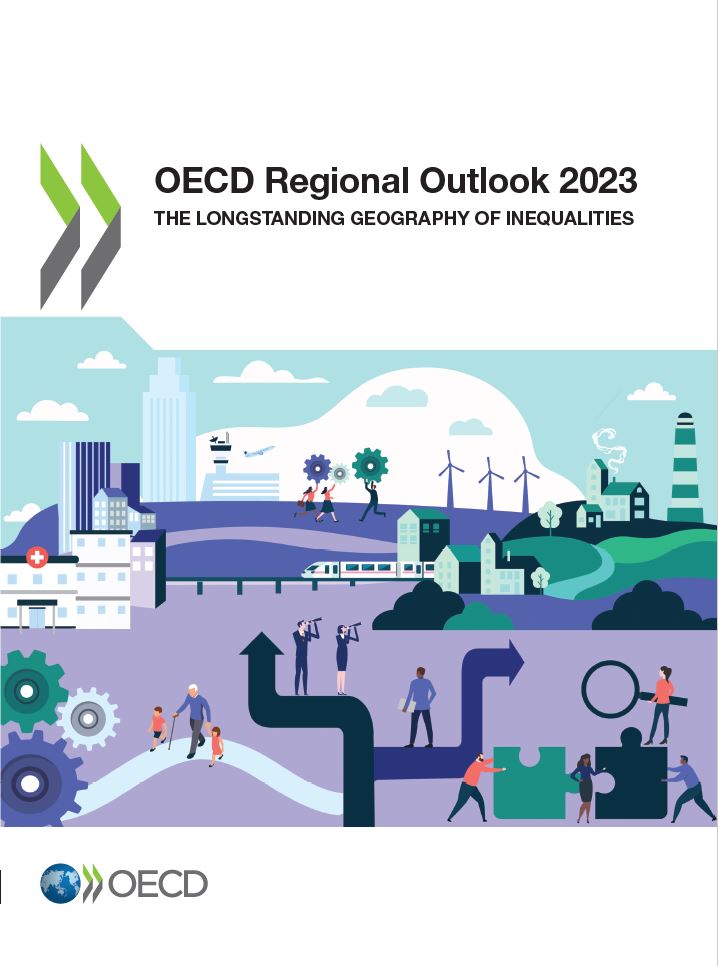Luxembourg
| OECD Regional Outlook | |
|---|---|

|
The OECD Regional Outlook reviews recent trends, policy developments, and prospects across OECD regions, including the underlying causes driving regional inequalities in performance and well-being. The report offers evidence, guidance and policy recommendations on how to improve competitiveness and productivity, promote inclusive growth, accelerate the net-zero transition and raise well-being standards through effective regional development policy and multi-level governance. |
Overview
| Population and territory | 645.397 inhabitants (as of 1 January 2022)1, 2.586 km2 |
|---|---|
| Administrative structure | Unitary |
| Regional or state-level governments | - |
| Intermediate-level governments | - |
| Municipal-level governments | 102 municipalities (communes) (state of play 16/03/2023), [100 municipalities from 01/09/2023 onwards due to two municipal mergers] |
| Share of subnational government in total expenditure/revenues (2021) | 11.0% of total expenditure 10.9% of total revenues [Source: Subnational governments in OECD countries: key data, 2023 edition] |
| Key regional development challenges |
|
| Objectives of regional policy |
|
| Legal/institutional framework for regional policy |
|
| Budget allocated to regional development (i.e., amount) and fiscal equalisation mechanisms between jurisdictions (if any) | Budget allocated to regional development 2022:
|
| National regional development policy framework | Master Programme for Spatial Planning of 2003 [new version to be adopted in 2023] (Programme directeur d’aménagement du territoire, PDAT) |
| Urban policy framework |
|
| Rural policy framework |
|
| Major regional policy tools (e.g., funds, plans, policy initiatives, institutional agreements, etc.) |
|
| Policy co-ordination tools at national level | Department of Spatial Planning, Ministry of Energy and Spatial Planning |
| Multi-level governance mechanisms between national and subnational levels (e.g., institutional agreements, Committees, etc.) |
|
| Policy co-ordination tools at regional level |
|
| Evaluation and monitoring tools | Regional systems of evaluation and monitoring (e.g. nature parks) |
| Future orientations of regional policy |
|
Recent policy developments
The Master Programme for Spatial Planning (PDAT), which defines an integrated strategy for the sector policies having a territorial impact and determines the general guidelines, priorities and measures of the government’s spatial planning policy, has been revised and is currently [state of play 16/03/2023] in the adoption phase. It sets priorities and defines lighthouse projects for regional development and cooperation in so-called “Action areas” (Espaces d’action), which are functional areas that can be either urban or rural as well as either national or cross-border.
| Territorial definitions |
|---|
|
The data in this note reflect different sub-national geographic levels in OECD countries. In particular, regions are classified on two territorial levels reflecting the administrative organisation of countries: large regions (TL2) and small regions (TL3). Small regions are classified according to their access to metropolitan areas (Fadic et al. 2019). The typology classifies small (TL3) regions into metropolitan and non-metropolitan regions according to the following criteria:
Disclaimer: https://oecdcode.org/disclaimers/territories.html |